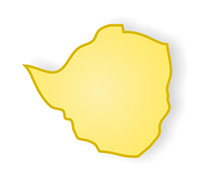The EPPSA project aims to study dynamics of energy poverty in three Southern African countries: Malawi, Zambia, and Zimbabwe. Read more about each country below.
 Malawi
Malawi
In Malawi, an estimated 97% of energy demand is met by the use of biomass, with the majority of that demand coming from households. Given the rapid rate at which Malawi’s population is growing, energy demand is putting significant pressure on Malawi’s forests, causing high rates of deforestation and forest degradation. Additionally, Malawi has low levels of electricity coverage with 32% urban electrification and only 4% rural electrification. Even in place connected to the grid, electricity is only intermittently available, due to underinvestment in the Electricity Supply Corporation of Malawi (ESCOM). Investment in clean energy remains limited, but there has been an increase in government support, particularly for improved cooking technologies. Read more about the status of Malawi’s energy transition in the Malawi State of Knowledge Report.
 Zambia
Zambia
Zambia has made significant strides in increasing energy access through private sector investment and support for markets for clean energy and technologies. As Zambia’s economy has grown over the past twenty years, there has also been a growth in the demand for energy, particularly electricity, which is operated by three operators, the Zambia Electricity Supply Corporation (ZESCO), Copperbelt Energy Corporation PLC (CEC), and Lusemfwa Hydro Power Corporation. Currently, urban electrification is at 45% and rural electrification is at 14%, and is expected to increase since the inclusion of power generation as a priority sector under the Zambia Development Agency (ZDA) Act of 2006. The building of power plants to generate hydro, thermal, and solar power qualify for tax concessions under this Act, encouraging further investment in this area. Zambia has particularly good potential for solar energy projects, given high levels of sunshine throughout the year.
 Zimbabwe
Zimbabwe
Zimbabwe has more people living in energy poverty now than 20 years ago. Political instability in the country has caused many facilities to go partially or completely offline in recent years, and there have been no new developments in the energy generation sector since 1988. Urban electrification is currently 80% and rural electrification is 21%, with 71% of the population reliant on biomass. There is enormous potential for solar energy and the government passed a solar policy in 2016, but low foreign investment has limited the growth of this sector. Investment in other clean energy technologies and improved cooking technologies is also very low.

